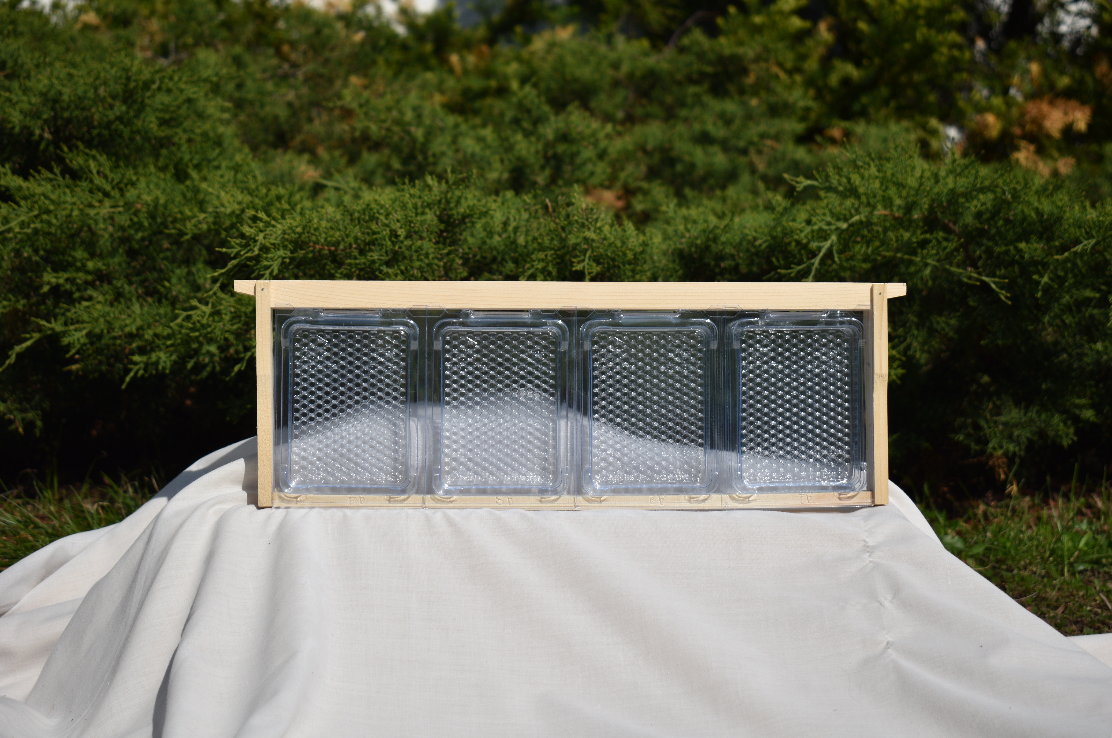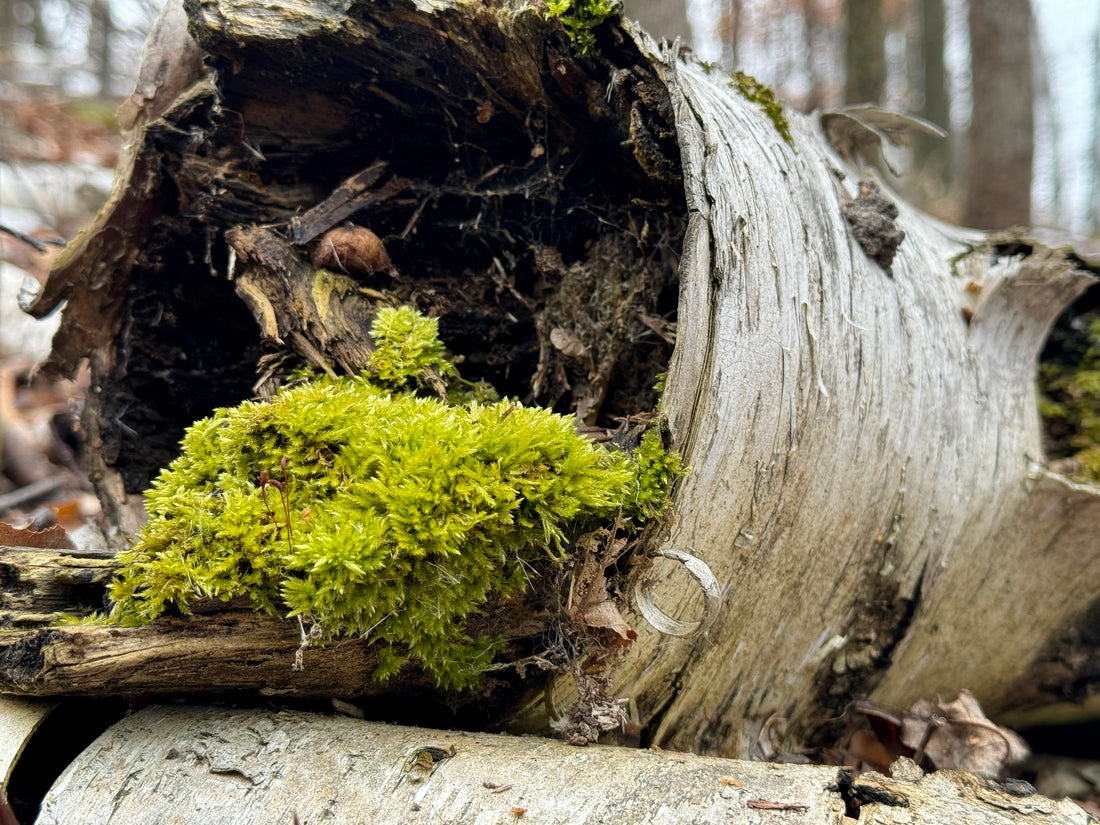This past weekend I took the time to purposefully walk almost the entire 200 acres of grounds here at Fry Family Farms. I do this several times each season not only to get some exercise, but also to just take in the beauty of nature, appreciating this special place through intentional observation.
Normally in early March I would be donning snowshoes or skis to trek over a 2-3ft snowpack, not this year. It has been so warm this winter there are only a few small pockets of snow on north facing slopes shaded by trees. I set out with only a light pair of hiking boots, oh and a cup of coffee.
I take the trail from our cabin to the North, edging a swamp along a ridge covered with oak and birch trees. Acorn husks crunch under my boots as I slip through the trees, so much for being quiet.
There is a large stone jutting out of the slope as I traverse on a narrow hoof cut path. It is covered in moss and lichen still caught in winter slumber. I round a knob and the ground fans out to a gentle meadow running just below a fenced pasture. Oaks and basswood, some twisted and broken through time and storms, line the field edges covering the forest floor with habitat for woodland creatures.
The creek is quiet, not yet flowing as it would normally be channeling spring runoff from melting snowpack in the fields above. I take a left pushing North along another oak covered ridge noticing how dry every stick and twig on the ground is.
I am near the Northwest corner of our property now, completely surrounded by old growth forest to the West and a plot of pines to the North that were planted maybe 35 years ago.
“Bees and Trees” I say to myself and envision placing a few hives here thinking it would be an ideal spot to site a colony. Then I remember how many bears we have had on trail cameras near here. I will need to put up an electric fence with a solar charger if I want to keep any honey for myself.
Out into the open pasture now edging East and South I cut through a wetland just cold enough I can get across without getting soaked. An oak savannah starts the incline back up to higher ground. I have a tenant who keeps cattle here and the forest floor is littered with landmines. They start to move as I approach the buildings softly lowing as I step over the fences to get around them.
A grove of boxelder stands to the south of an old hog barn, craggy and twisted; they are ideal cover for whitetail deer. We see several sets of fawns born here every spring and I can’t wait to see this year's crop.
The canopy blends into black walnut now, a drainage runs South to North lined with giant Linden trees, in a few weeks my wife will hunt for morel mushrooms here. The edge of the tree lot is a favorite hiding place for the delicious fungi.
Crossing another pasture I come to a willow thicket that looks impenetrable from a distance but is criss-crossed with wildlife trails. I slip into the maze and lose all sight of a horizon. There are deer beds and nests everywhere, each clump of bushy willow seems to have matted grass trampled flat around its base, especially on the South sides.
Willows are an important and underappreciated habitat providing cover for wildlife, as well as food for bees. Stopping to inspect some willow branches, I can see buds just starting to emerge, these will soon explode into catkins loaded with pollen. The male willow catkins have both pollen and nectar while the female flowers will only have nectar. This early pollen source is the cornerstone of our apiary here at the farm. Loaded with nearly 20% crude protein, willow pollen is a prolific and early resource. This pollen is also sticky making it easier for the bees to collect. Our bees will gorge themselves on this pollen and build up so quickly that we sometimes have a hard time staying ahead of the swarming impulse.
What looks like swamp and scrub brush to some is really a gold mine for bees and other insects looking to power up early for warmer weather.
We site our apiary near this important resource for this reason, our yard is situated in a small clearing on the south edge of a woodlot just a few meters across a finger of pasture from this willow thicket. The mature canopy of trees provide shade from the hot afternoon sun from the West, a windbreak from the North as well as a defined edge for bees to travel along between pasture and forest.
I press my ear against one of our hives to listen for the buzz. Life! Even through a 2 inch layer of insulation wrap I can hear the colony inside. I suppress the urge to crack the lid and take a peek in on the girls. Soon enough it will be time.

